Milwaukee 2-1/8 in. Big Hawg Carbide Hole Saw
$25.97
This amazing Milwaukee Big Hawg Carbide Hole Saw provides extreme life and durability in both nail-embedded wood and abrasive material applications.
In stock
Description
Milwaukee BIG HAWG with carbide teeth is first-to-market in providing extreme life and durability in both nail-embedded wood and abrasive material applications. Utilizing advanced carbide technology, the new BIG HAWG with carbide teeth gives users 50-times life in demanding applications with the ability to cut 1000 plus more nails. 10-times larger carbide teeth rip through materials 5 times faster while deeper slots make for fast and easy plug removal. BIG HAWG with carbide teeth allows users to cut through the toughest materials including nails, cement board, shingles, plaster and stucco.
- 10-times larger carbide teeth
- 3-tooth design for fast aggressive cuts
- Carbide tipped multi-material pilot bit for increased material versatility
- Thicker backer for extreme life in demanding applications
- Optimized slot design for fast plug removal
- Enlarged braze surface for stronger bond to the carbide teeth
- Cuts wood, nails, shingles, cement board, plaster and more
- Includes: one 2-1/8 in. BIG HAWG with carbide teeth
Additional information
| Weight | .45 lbs |
|---|---|
| Dimensions | 2.93 × 3.78 × 5.51 in |
| Arbor Size | 0 |
| Arbor included | No |
| Bit Diameter | 3/8 in |
| Bit Length (in.) | 3.5 |
| Bit Material | Carbide |
| Drill Bit Type | Hole Saw |
| Drill Bit Type(s) Included | Hole Saw |
| Drilling Depth (in) | 2.5 |
| Hole Saw Diameter (in) | 2-1/8" |
| Individual/Set | Individual |
| Material Cut | Multi-Purpose |
| Min Chuck Size Required | 1/2 In. |
| Model | 49-56-9210 |
| Pilot Bit Included | No |
| Teeth Per Inch | 1 |
Reviews (70)
70 reviews for Milwaukee 2-1/8 in. Big Hawg Carbide Hole Saw
Only logged in customers who have purchased this product may leave a review.
Related products
Drill Bits
Model# DW2045 GDrill Bits
Model# 48-20-8856Drill Bits
Milwaukee 1/4 in. X 3-1/2 in. Pilot Drill Bit For Hole Saw Arbor
Model# 49-56-8010Drill Bits
Model# DW2162Drill Bits
Model# FB-015Drill Bits
Bosch 20 in. Hammer Steel 1-1/8 in. Hex Moil Point Chisel for General Chipping Work
Model# HS2161Drill Bits
Model# 49-56-0247Drill Bits
Model# DW2046 G


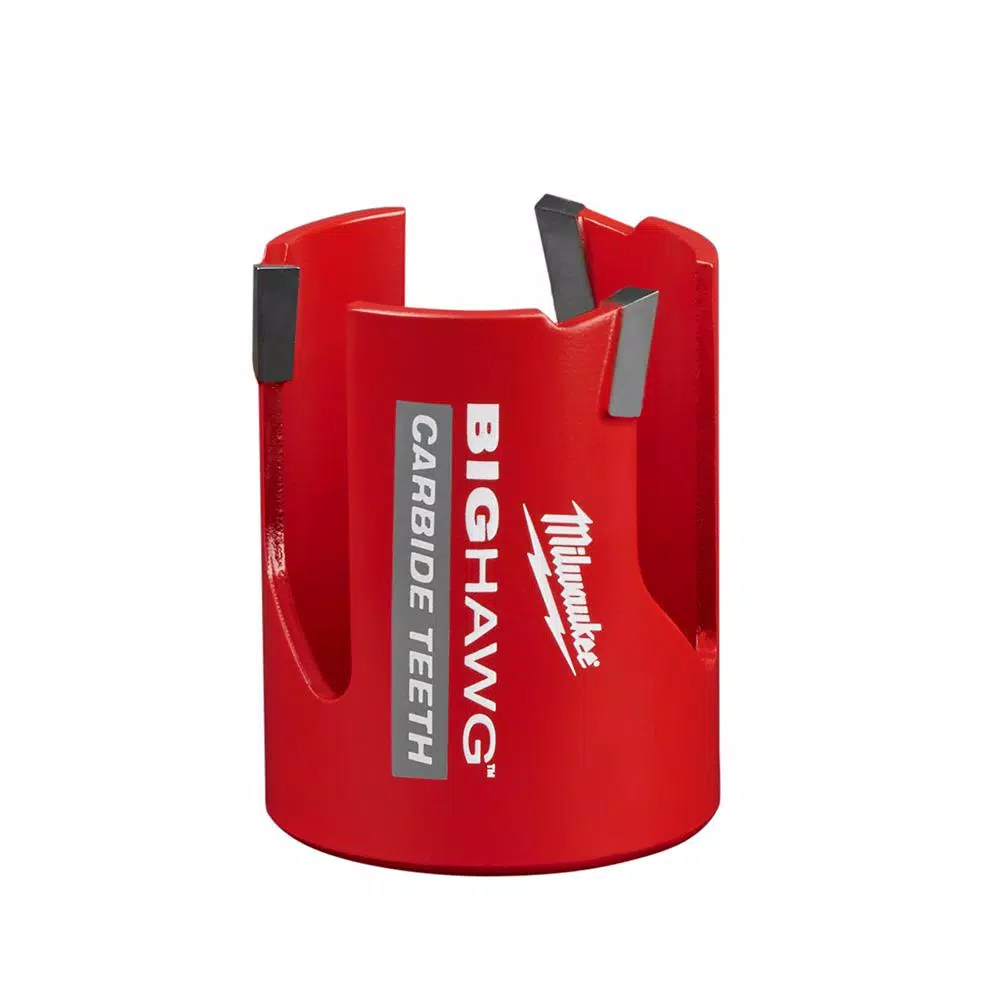
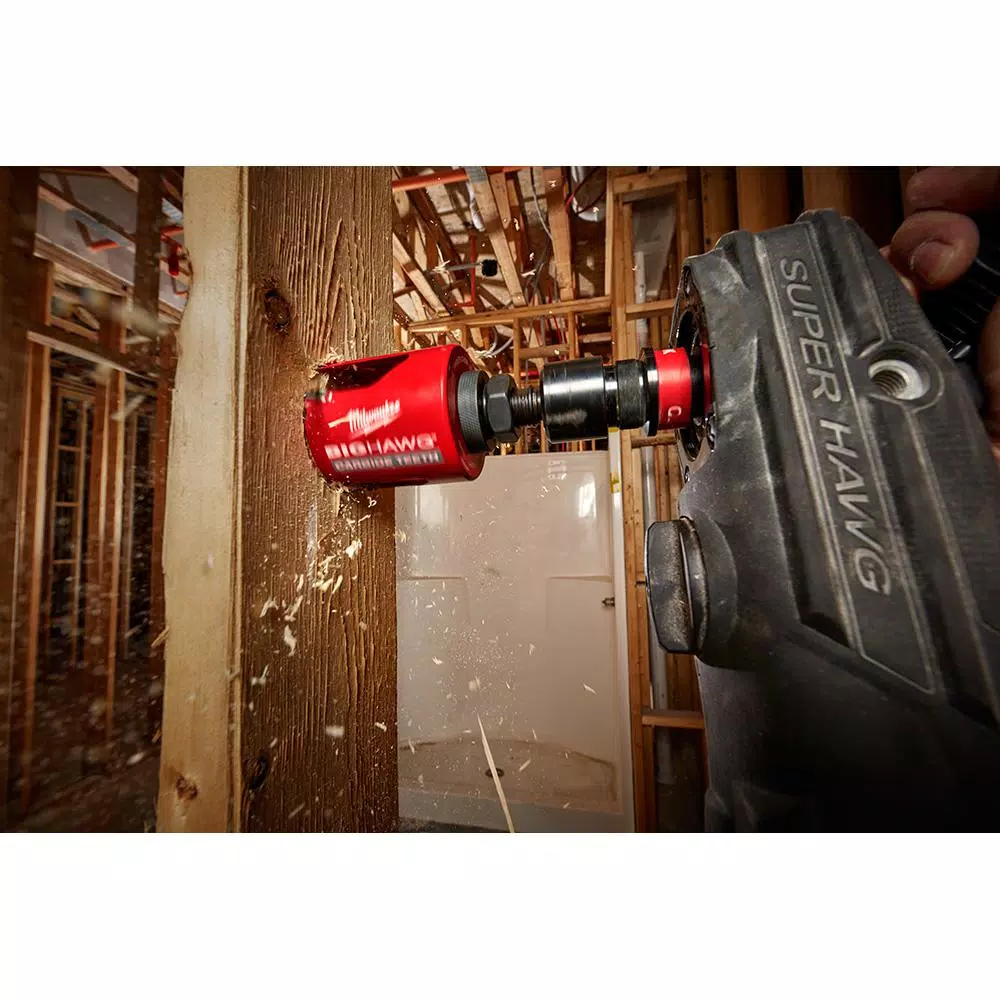
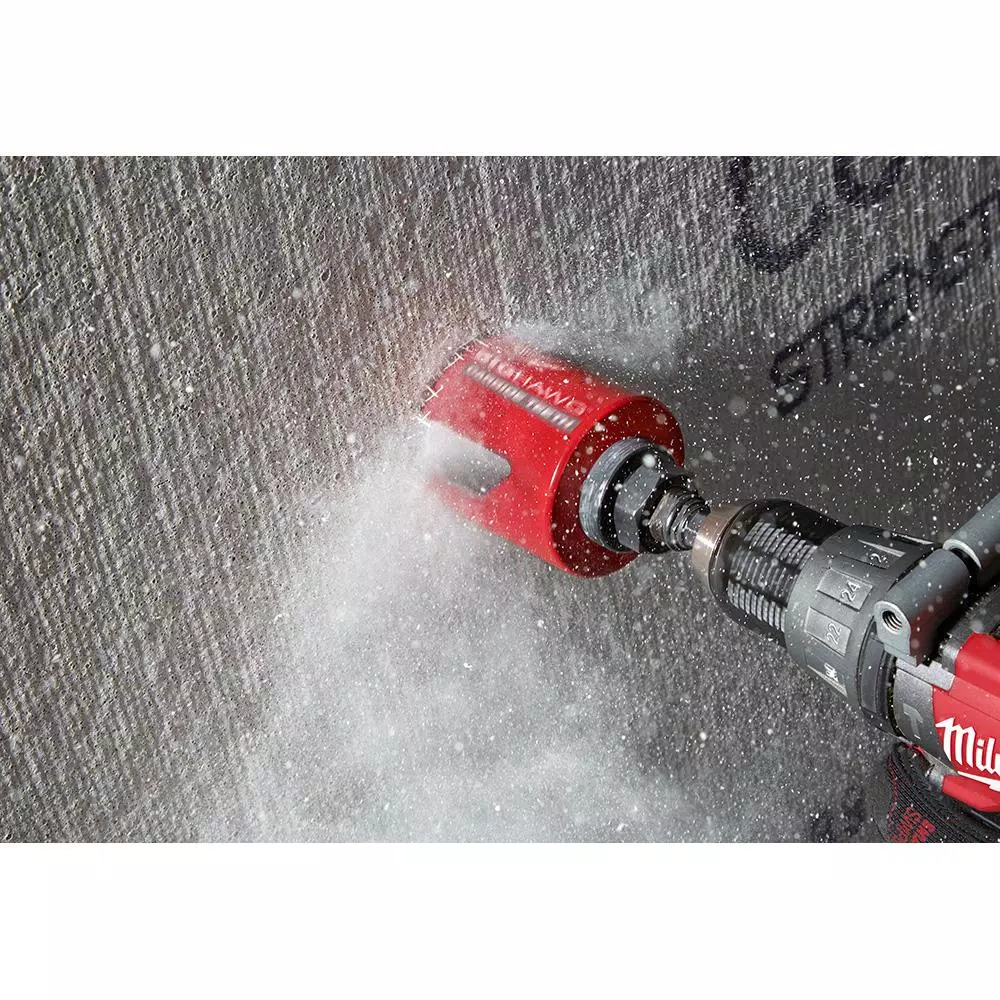
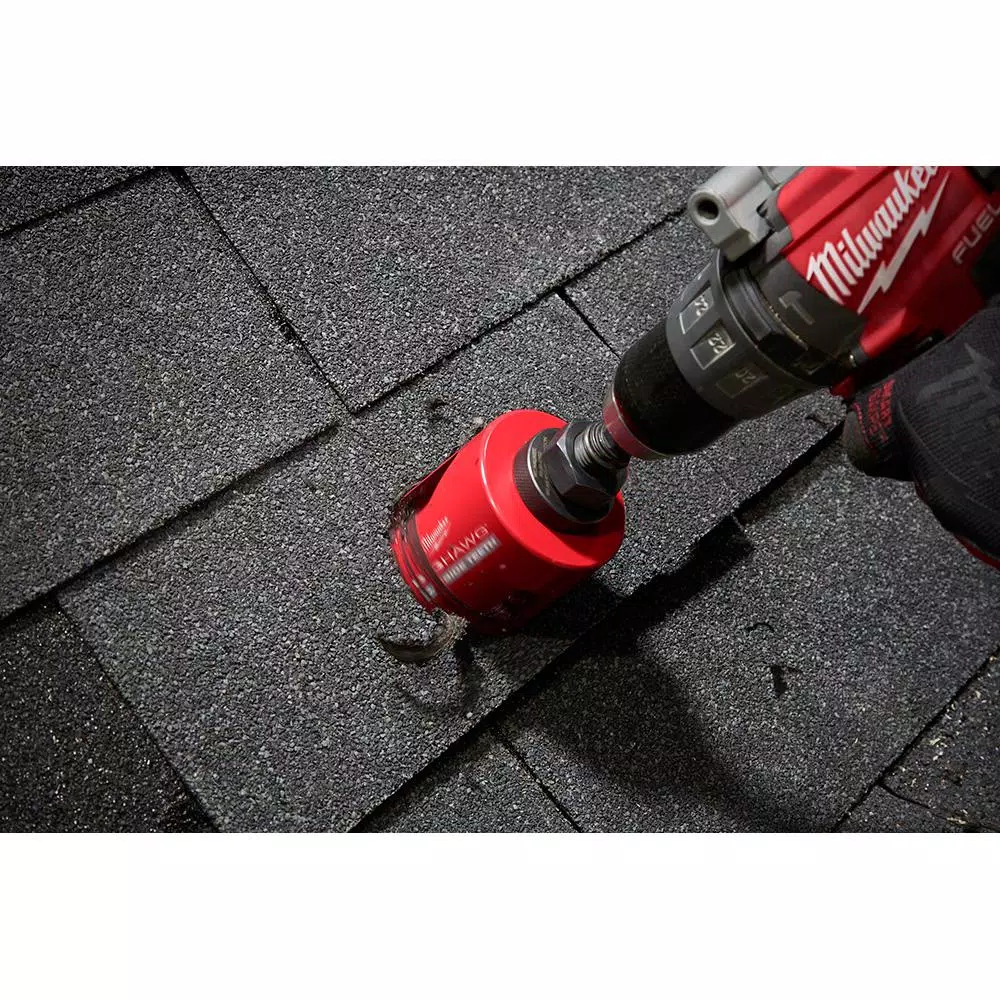
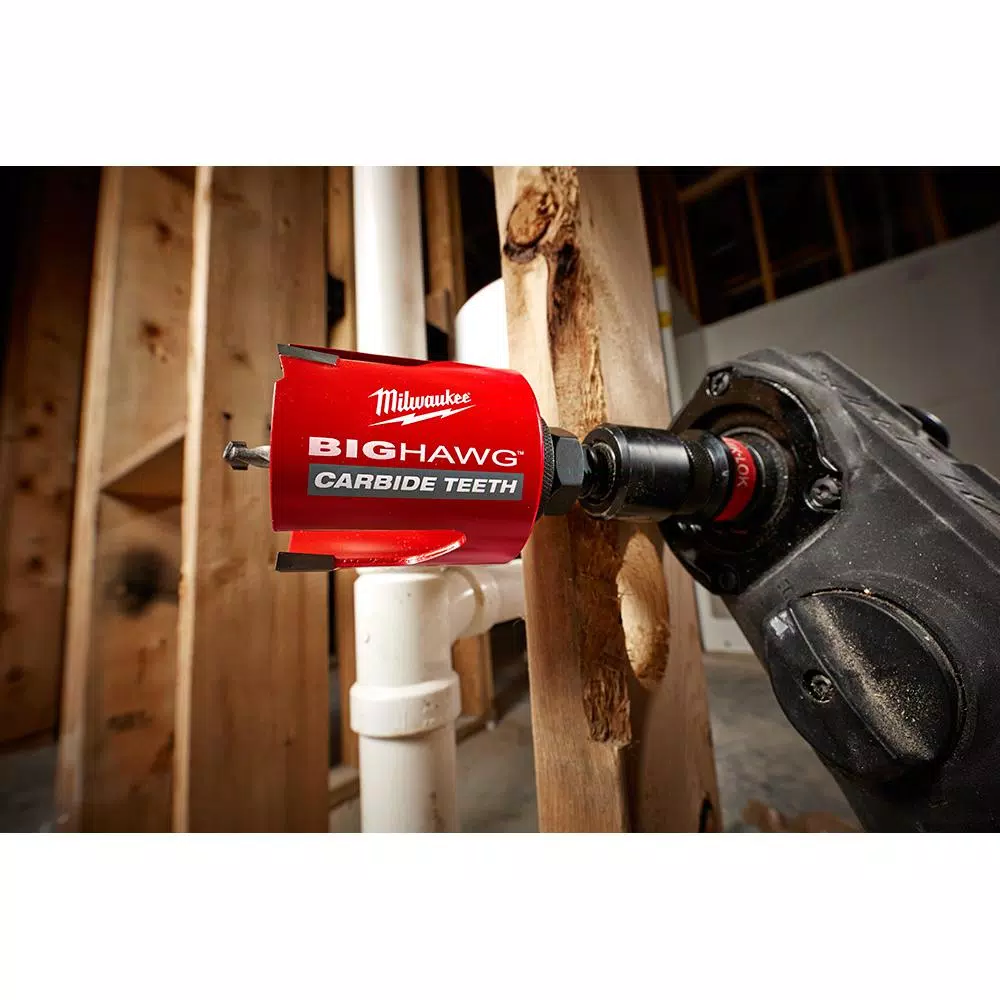





















Helmer Rogahn (verified owner) –
Note for purchase, you need a Milwaukee 49-56-9305 arbor which is sold separately. Milwaukee’s saw blades have always held up for me longer than other brands. I know that they will hold up well and I won’t have an issue with it. This blade is no exception. I was able to easily cut through 2 different materials, one that I knew was littered with nails. This didn’t burn out and I’m confident will do the job on many more projects.
Osborne Jast (verified owner) –
It beutifuol
Jermain Jaskolski (verified owner) –
This is another of those products that takes a SawzAll and a half stick of dynamite to get it out of the packaging, which is really, really annoying (I dinged it one star for that). Other than that, the carbide tips are thick and sharp and can probably be sharpened several times if one had the capability of doing that. It takes a standard arbor, which anyone who regularly uses hole saws should have (as opposed to a Freud/Diablo hole saw I recently purchased, which only accepts a Freud arbor), and it is fairly deep–a full two inches even after accounting for the arbor protrusion. If you are new to large hole saws and have a powerful 1/2″ drill (all of the arbors for this size hole saw require a 1/2″ drill, unless you can find an adapter somewhere), start your cut slowly to minimize binding or you are likely to end up with a sprained wrist. Once the teeth are buried in the hole, binding is less likely as long as you keep the saw straight.
Joseph Veum (verified owner) –
Absolutely rips thru wood!
Jovanny Hermiston (verified owner) –
While traditional bi-metal hole saws still have their place in certain applications, for rough holes in framing members 3-tooth carbide hole saws, such as these Milwaukee Big Hawgs, can’t be beat.As a residential electrical contractor, boring holes in wood framing members is something I do most days – some days, much of the day. For many years, self-feed bits were the only real option to the professional for larger holes. While they also provide for rapid boring, one good nail strike and they require costly sharpening. They also require a lot of drill. The Big Hawgs, were they are only cutting the kerf of the saw out, require a lot less drill, making them ideal, with today’s cordless job. This 2-1/8″ model is literally a 3-4 sec. hole through 2x pine framing, with any of my 18v drills.Again, these are designed for rapid large holes through framing and other construction materials, and excel at it. If you require a more refined hole, or are drilling through thin, brittle material – such as vinyl siding – a traditional hole saw is what you seek.
Nathen Adams (verified owner) –
Leaves extremely rough cut in wood
Odie Breitenberg (verified owner) –
Used this to cut holes in “support wood” over a drop ceiling for led lights. Worked great and made the task go quickly. I have 25 more holes to do so that was a great tool for this job…
Eva Legros (verified owner) –
Works great and cuts fast.
Kenneth Green (verified owner) –
Worked flawlessly on my plaster ceilings.
Oscar Casper (verified owner) –
Great for cutting holes in sheetrock.
Alfreda O’Keefe (verified owner) –
Used it for stucco for range hood vent. It worked well
Christelle Lowe (verified owner) –
Milwaukee never lets me down! These are amazing hole saws that pretty much rips through any material yet leaves a clean and perfectly honed hole. They aren’t overly heavy and works well with their m12 drills. My only wish is that they come in a bundle with several sizes and a kit that holds them all together. Overall these are by far some of the best hole saws you can buy.
Rachelle Lang (verified owner) –
Delicately cut through vinyl flooring and powered through 1 ½” subflooring plywood.
Savion Wolf (verified owner) –
As a plumber, when i rough in a house I need tools that are going to work day after day that work well and without breaking down. For years I’ve used Big Hawg holesaws and I have never been let down. In rough plumbing there are always hidden things that must be drilled through whether it’s drywall screws that you didn’t see or a jumble of nails that simply can’t be removed or even piles of old cement plaster that are inside the walls or joists. I grab the BigHawg holesaw and go. It is of superior quality. There is no other holesaw on the market made to this high standard. As soon as I drill a few holes in “impossible” materials the other trades on the job want to know what I’m using and where they can get a set. Get a set, you won’t be disappointed!!!
Stephon Prosacco (verified owner) –
I bought this 4 1/4 size to complete my Milwaukee Big Hawg hole saw kit and have a saw for installing 4 inch pipe. The hole saw easily cut through two 16 penny nails driven into a pressure treated 2×12 so it definitely cuts nails as advertised. This is the most aggressive hole saw I have ever used.
Retha Weissnat (verified owner) –
Very good, for 6” metal pipes.
Esmeralda Zulauf (verified owner) –
I have been a big fan of Milwaukee for a long, long time. So I have been a bit dismayed that they moved their production overseas. A couple of recent tools have been short of my expectations. But, overall they do still seem to distribute a great product. This “Hole Saw”, is reminiscent of their production standards of awhile back. Mind you, they still produce good stuff. Their product control standards are in place. But I digress, this “Hole Saw” weighs in at a whopping 2 Lbs packaged, this is a saw not for a small drill, so again my Milwaukee Hawg angled drill will power this saw through walls. Solid and impressive Hole Saw, still a fan.
Larissa Monahan (verified owner) –
While traditional bi-metal hole saws still have their place in certain applications, for rough holes in framing members 3-tooth carbide hole saws, such as these Milwaukee Big Hawgs, can’t be beat.As a residential electrical contractor, boring holes in wood framing members is something I do most days – some days, much of the day. For many years, self-feed bits were the only real option to the professional for larger holes. While they also provide for rapid boring, one good nail strike and they require costly sharpening. They also require a lot of drill. The Big Hawgs, were they are only cutting the kerf of the saw out, require a lot less drill, making them ideal, with today’s cordless job. This 5-1/4″ model is roughly an 8-second hole through 2x pine framing, in my M18 Hole Hawg.Again, these are designed for rapid large holes through framing and other construction materials, and excel at it. If you require a more refined hole, or are drilling through thin, brittle material – such as vinyl siding – a traditional hole saw is what you seek.
Sylvan Paucek (verified owner) –
Cuts through stucco like butter….with a standard drill!
Rogelio McCullough (verified owner) –
While traditional bi-metal hole saws still have their place in certain applications, for rough holes in framing members 3-tooth carbide hole saws, such as these Milwaukee Big Hawgs, can’t be beat.As a residential electrical contractor, boring holes in wood framing members is something I do most days – some days, much of the day. For many years, self-feed bits were the only real option to the professional for larger holes. While they also provide for rapid boring, one good nail strike and they require costly sharpening. They also require a lot of drill. The Big Hawgs, were they are only cutting the kerf of the saw out, require a lot less drill, making them ideal, with today’s cordless job. This 4″ model is an 8-second hole through 2x pine framing with my M18 Hole Hawg. With the smaller drill pictured it was roughly a 15-second hole, as I dropped it down to low gear (which I would not recommend anyone other than a pro user doing – I only used this size drill to show how efficiently these Big Hawgs cut).Again, these are designed for rapid large holes through framing and other construction materials, and excel at it. If you require a more refined hole, or are drilling through thin, brittle material – such as vinyl siding – a traditional hole saw is what you seek.